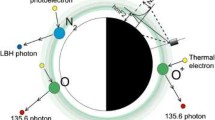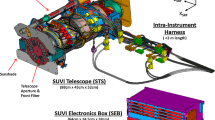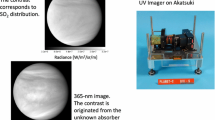Abstract
The Far Ultraviolet Wideband Imaging Camera (WIC) complements the magnetospheric images taken by the IMAGE satellite instruments with simultaneous global maps of the terrestrial aurora. Thus, a primary requirement of WIC is to image the total intensity of the aurora in wavelength regions most representative of the auroral source and least contaminated by dayglow, have sufficient field of view to cover the entire polar region from spacecraft apogee and have resolution that is sufficient to resolve auroras on a scale of 1 to 2 latitude degrees. The instrument is sensitive in the spectral region from 140–190 nm. The WIC is mounted on the rotating IMAGE spacecraft viewing radially outward and has a field of view of 17° in the direction parallel to the spacecraft spin axis. Its field of view is 30° in the direction perpendicular to the spin axis, although only a 17°×17° image of the Earth is recorded. The optics was an all-reflective, inverted Cassegrain Burch camera using concentric optics with a small convex primary and a large concave secondary mirror. The mirrors were coated by a special multi-layer coating, which has low reflectivity in the visible and near UV region. The detector consists of a MCP-intensified CCD. The MCP is curved to accommodate the focal surface of the concentric optics. The phosphor of the image intensifier is deposited on a concave fiberoptic window, which is then coupled to the CCD with a fiberoptic taper. The camera head operates in a fast frame transfer mode with the CCD being read approximately 30 full frames (512×256 pixel) per second with an exposure time of 0.033 s. The image motion due to the satellite spin is minimal during such a short exposure. Each image is electronically distortion corrected using the look up table scheme. An offset is added to each memory address that is proportional to the image shift due to satellite rotation, and the charge signal is digitally summed in memory. On orbit, approximately 300 frames will be added to produce one WIC image in memory. The advantage of the electronic motion compensation and distortion correction is that it is extremely flexible, permitting several kinds of corrections including motions parallel and perpendicular to the predicted axis of rotation. The instrument was calibrated by applying ultraviolet light through a vacuum monochromator and measuring the absolute responsivity of the instrument. To obtain the data for the distortion look up table, the camera was turned through various angles and the input angles corresponding to a pixel matrix were recorded. It was found that the spectral response peaked at 150 nm and fell off in either direction. The equivalent aperture of the camera, including mirror reflectivities and effective photocathode quantum efficiency, is about 0.04 cm2. Thus, a 100 Rayleigh aurora is expected to produce 23 equivalent counts per pixel per 10 s exposure at the peak of instrument response.
Similar content being viewed by others
References
Anger, C. D., Babey, S. K., Broadfoot, A. L., Brown, R. G., Cogger, L. L., Gattinger, R., Haslett, J. W., King, R. A., McEwen, D. J., Murphree, J. S., Richardson, E. H., Sandel, B. R., Smith, K. and Vallance Jones, A.: 1987, ‘An Ultraviolet Auroral Imager for the Viking Spacecraft’, Geophys. Res. Lett. 14, 387–390.
Burch, C. R.: 1947, ‘Reflecting Microscopes’, Proc. Phys. Soc. 59, 41.
Cogger, L. L., Hearn, D. J., Murphree, J. S., King, R. A., King, E. P., Galperin, Y. I., Gordon, B. and Matsushita, J.: 1995, ‘Ultraviolet Auroral Imager (UVAI)’, in Y. Galperin, T. Muliarchik and J. P. Thouvenin (eds), Interball Mission and Payload, Russian Space Agency, Space Research Institute and French Space Agency, p. 382.
Frank, L. A., Craven, J. D., Ackerson, K. L., English, M. R., Eather, R. H. and Crovillano, R. L.: 1981, ‘Global Auroral Imaging Instrumentation for the Dynamics Explorer Mission’, Space Sci. Instrum. 5, 369.
Murphree, J. S., King, R. A., Payne, T., Smith, K., Reid, D., Adema, J., Gordon, B. and Wlochowicz, R.: 1994, cThe Freja Ultraviolet Imager’, Space Sci. Rev. 70, 421.
Torr, M. R., Torr, D. G., Zukic, M., Johnson, R. B., Ajello, J., Banks, P., Clark, K., Cole, K., Keffer, C., Parks, G., Tsuratani, B. and Spann, J.: 1995, ‘A Far Ultraviolet Imager for the International Solar-Terrestrial Physics Mission’, Space Sci. Rev. 71, 329.
Author information
Authors and Affiliations
Rights and permissions
About this article
Cite this article
Mende, S., Heetderks, H., Frey, H. et al. Far ultraviolet imaging from the IMAGE spacecraft. 2. Wideband FUV imaging. Space Science Reviews 91, 271–285 (2000). https://doi.org/10.1023/A:1005227915363
Issue Date:
DOI: https://doi.org/10.1023/A:1005227915363




